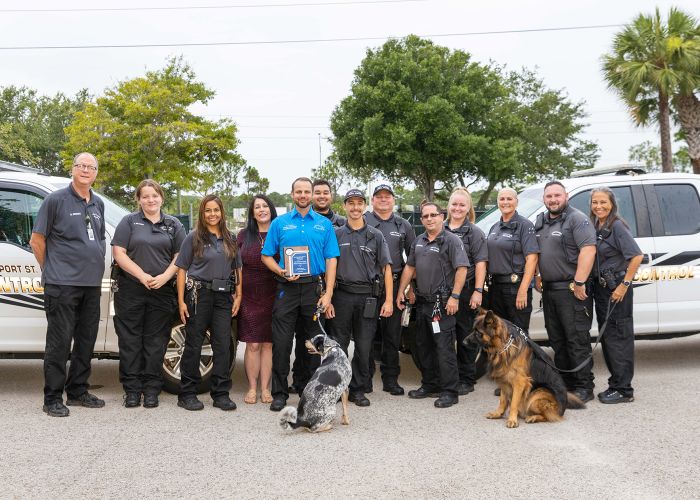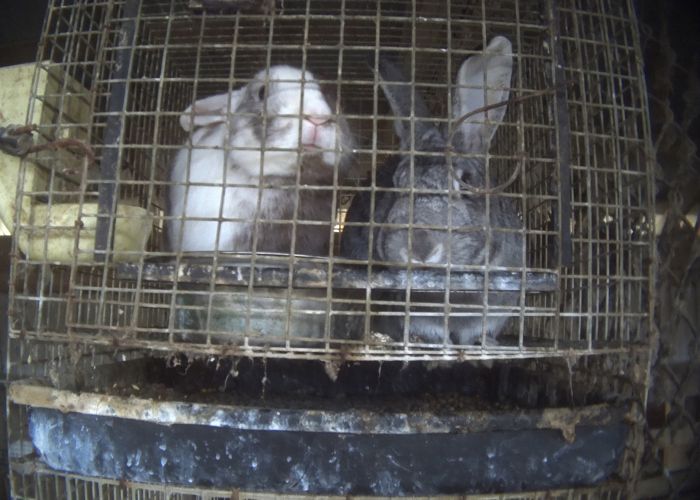When animal rescue isn't
Some groups that claim to be helping animals are actually hurting them
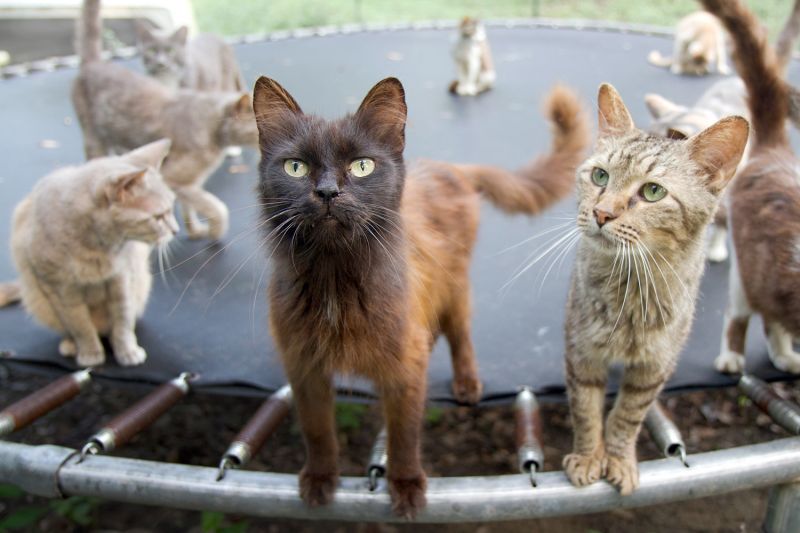
At Montgomery County Animal Services in Maryland, cruelty investigator Jack Breckenridge thumps a single arrest warrant onto his desk. The stack of paper is an inch thick.
“I initially charged her with 252 counts of animal cruelty,” he explains. “She was convicted of 66. We refer to this case as ‘The Rockville 66’ because that’s how many dogs we took out of her house.”
A backyard breeder, you might guess, or a dogfighting raid. In fact, 47-year-old Katherine Ting Tiong operated Forever Homes Animal Rescue out of her home in Rockville. According to records, shelters in New York gave her their least adoptable dogs—the blind seniors, the beagle with an egg-sized tumor on her ear, the Chihuahua missing an eye—and Tiong was regularly called on by other animal rescues to pull dogs from shelters on their behalf.
But in December 2015, animal services received a call about a dog who had bitten someone at an adoption event, which led Breckenridge and a colleague to Tiong’s home. Within minutes of meeting her, the officers noted the “60 to 80 individual piles of feces” on her driveway and the feces coating her feet, in open-toed shoes, and her legs, all the way up to her knees. They came back with a search warrant.
It was New Year’s Day, and inside the dimly lit home, a handful of dogs ran loose across buckled and splintered floorboards. The rest peered expectantly from filthy, stacked crates. All lived in squalor, their lives enveloped in urine and excrement, old newspapers, rusted exercise equipment, tubes of toothpaste and boxes of pasta.
“We’re not the housekeeping police; we’re the animal police,” says Breckenridge, who has a pragmatic sense of humor about his job. “Turns out it’s one and the same.”
_______
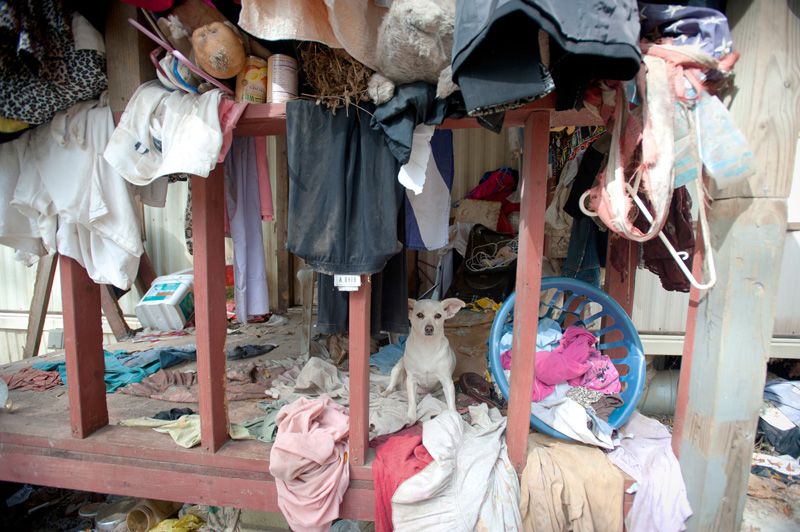
Randall Lockwood, psychologist and ASPCA senior vice president of anti-cruelty initiatives, estimates that authorities respond to 2,500 to 3,500 animal hoarding cases each year in the U.S.; Breckenridge estimates he responds to one or two every month in his county alone.
“Rescue hoarders”—animal hoarders who consider themselves rescues or sanctuaries—make up “virtually all” of animal hoarding cases involving more than 50 animals, says Lockwood. He estimates that 75 percent of cases involve dogs and cats, but he’s witnessed hoarding of rats, iguanas, rabbits and even tarantulas.
Some rescue hoarders start as legitimate rescuers, taking in strays and shelter pets, but due to the psychology of hoarding, find themselves both unable to recognize their limitations and unable to let go of the animals in their care. “The hoarders really believe that only they know what’s best for these animals, and there is no other recipient of these animals that can provide the quality of care that they think they’re providing,” says Lockwood.
Others actively raise money for animal care, essentially “defrauding people, with animals as the victims,” he says. This calculated misrepresentation often includes a polished website and social media presence, and the hoarder might volunteer to take in animals in return for hefty “donations.”
In fact, rescue hoarding cases can have a lot in common with puppy mill cases, says Jessica Lauginiger, director of animal crimes at the Humane Society of the United States, with the added complication that puppy mills sometimes pose as rescue groups. Like puppy mills, rescue hoarders might post appealing photos of where animals are supposedly housed or share images of happy, healthy dogs, even while their animals are sick and living in squalor.
Rescue hoarders can be very media-savvy, Lockwood says, “and can rapidly gather a bunch of supporters who are often other hoarders, even in cases where there’s very clear-cut evidence of considerable suffering. If word gets out that there’s going to be some kind of rescue operation, there have been instances where investigators have showed up and the animals have gone. They got word of it through the network of other hoarders and have moved them to some other location.”
The public praise rescuers receive can even make media-savvy rescue hoarders start to feel like they have a certain celebrity status, says Lauginiger, and the confident front can lead people to assume they’re running legitimate organizations. She describes unwitting owners shipping their pets across state lines with a donation check, and a hoarder who was receiving donations from people worldwide. But whether they’re well-meaning and overwhelmed or deliberately fraudulent, rescue hoarders are typically strongly attached to their identity as rescuers, says Lockwood.
“They define themselves as rescuers—that’s what gives them a sense of value, a sense of purpose. It’s part of their self-image, which is one of the reasons why responding in these cases can be so difficult, because you’re challenging the core definition of themselves,” he says. “This animal has enormous psychological significance to this person, but that’s not the same as love, and that’s not the same as caring.”
Though manipulative behavior might seem like the work of a logical mind, many types of animal hoarders choose to live with the animals, in the same filthy conditions, says Lauginiger. Lockwood recalls showing a woman a photograph of her own living room. “It’s just a little dirty,” she said of the room, which was piled with feces and the bodies of dead animals.
Diane Balkin, senior attorney at the Animal Legal Defense Fund, explains that, legally speaking, “they can be mentally ill and perfectly competent.”
_______

“They absolutely started with the right motivation and intention,” Breckenridge says of the rescue hoarders he’s encountered in his career.
He recalls Merle and Susan Uskievich, who he says couldn’t bear the thought of kittens losing their lives during kitten season, when thousands of litters make their way into shelters. After receiving complaints about fleas entering neighboring businesses, the county obtained a search warrant for the elderly couple’s commercial condo, which was crawling with fleas but housed no animals. When another complaint led responders to the couple’s home, separate from the condo, they discovered Alpha Group Animal Rescue, a legally incorporated nonprofit with tax-exempt status operating in floor-to-ceiling towers of trash.
“At one time, they were a very good rescue,” explains Breckenridge. For around 20 years, the Uskieviches pulled kittens from local shelters, treating them for fleas and then transporting them to a local pet supply store for adoption. “As their [object hoarding] progressed, they couldn’t ask anybody to come help them, but they also couldn’t leave a kitten in the shelter. They were trying to do the right thing. They just got in way over their head.”
Although they’d never been permitted to pull kittens from the Montgomery County shelter, Breckenridge is disapproving but matter-of-fact about why other shelters may have been less diligent about researching the rescue: “To be in a municipal shelter in kitten season … ” he says, shaking his head. “You gotta unload them, or you gotta euthanize them.” The fact that most rescue groups work to help shelters prevent euthanasia can make these hoarding cases especially challenging, says Lockwood, because communities will sometimes rally to support the hoarder.
On Facebook, many are hesitant to badmouth Alpha Group, defunct after the couple was charged with 10 counts of animal cruelty and took plea deals in July 2016. It’s rated 3 out of 5 stars, with an even split between 5-star and 1-star reviews. “I hope this turns out not to be true,” writes one reviewer. “They saved hundreds of lives by adopting out cats.” Another acknowledges the couple was charged with animal cruelty, then adds, “Their hearts are in the right place.”
“I think there’s a reluctance, in general, to prosecute [rescue] hoarders,” says Balkin. “‘A bad life is better than no life’ is some of the theory.”
The evidence should speak for itself, says Breckenridge. Of two dogs and 28 cats found in the Uskieviches’ home, every animal was suffering from flea anemia. One kitten had almost starved and had to be euthanized; nine chickens, whose “fresh eggs” were advertised in front of the home, were found in “horrifically filthy cages.”
But he admits it can be difficult for people to reconcile the evidence with their existing impression of a rescue or rescuer. Susan Uskievich, whose legs and hands were raw with flea bites and scratches at the time the animals were seized, is “a very likable, approachable person,” explains Breckenridge. “She’s not the person you think would be doing this to animals.”
_______

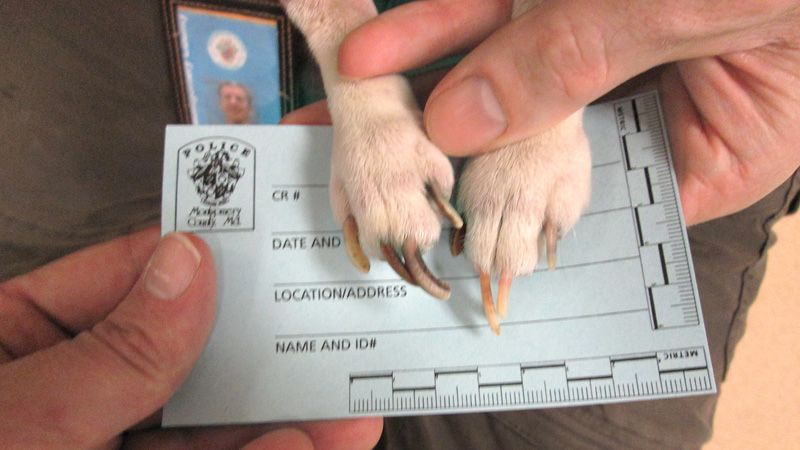
Lockwood says prosecutors have told him they’d rather try a capital murder case than attempt to prosecute an animal hoarder.
“Rescue hoarders in general tend to be very litigious. Even in the face of clear-cut medical evidence of harm they’ve caused, they continue to fight, they continue to go through, often, many rounds of attorneys,” he says. “They often will refuse to surrender animals until the last possible moment or until conviction because they feel that they’ve done nothing wrong and that the humane community is the crazy one.”
Lockwood explains that animal hoarding is often triggered by immense personal loss, like the death of a child. The hoarder “needs the comfort of having the animals around, but they’re never enough to fill that void.” He says response teams should include mental health professionals, and they shouldn’t treat rescue hoarding cases as raids, but instead try to establish rapport with the perpetrators, perhaps attempting to find common ground in wanting the best for the animals. “This is not an animal control problem, or a humane problem, or a mental health problem, or a housing or law enforcement problem,” says Lockwood. “It’s all of those together.”
Balkin isn’t deterred by what some attorneys see as an impossible challenge; she believes that criminal charges in animal hoarding cases help both the accused and the animals. “There are no disadvantages to filing criminal charges if you can prove them,” she says, explaining that charges don’t necessarily equal prosecution or jail time. Then “you can intervene in terms of the care, evaluation and treatment of the animals and the care, evaluation and treatment of the hoarder.”
A ruling or plea deal might include no jail time in exchange for relinquishment of all animals, plus mandatory mental health counseling, a ban or limit on future ownership of animals, and regular, unannounced home visits during a probationary period—although almost 100 percent of animal hoarders will hoard again and should be monitored “forever,” says Breckenridge.
“If you don’t prosecute, there’s no stopping that cycle,” says Lauginiger. She adds that many hoarders have no family, or family that turns a blind eye to their situation. “I never advocate for jail time because that’s not going to do them any good. They need help in so many other ways.”
But again, hoarding cases can be difficult to prosecute. Huge animal seizures and endless rounds of litigation can stretch an organization’s resources, especially in states without strong bonding and forfeiture laws, which require owners to cover the cost of caring for seized animals. And some judges and juries just don’t consider neglect as a result of hoarding an act of cruelty, says Lockwood.
“Obviously, the best defense for a hoarder is going to be insanity. It’s a very difficult standard to meet,” since having a mental illness doesn’t make you insane, says Balkin, adding that sometimes it’s hard not to feel sorry for the hoarder, who usually professes to love the animals. “I try to remind the jury, it’s not about punishment; it’s about accountability, the fact that for each animal we have charged [them with], we have proven that he or she has done, or failed to do, something.”
Like Tiong, whose own dogs had access to food and water, rescue hoarders often have favorite animals whom they single out for better care. Ironically, the presence of those animals can strengthen an animal cruelty case. “It shows that the individual involved actually is aware of what it takes to take proper care of animals and has elected to not do that for a large number of animals in their care,” says Lockwood. Mental illness “may be an explanation, but it’s not an excuse.”
_______
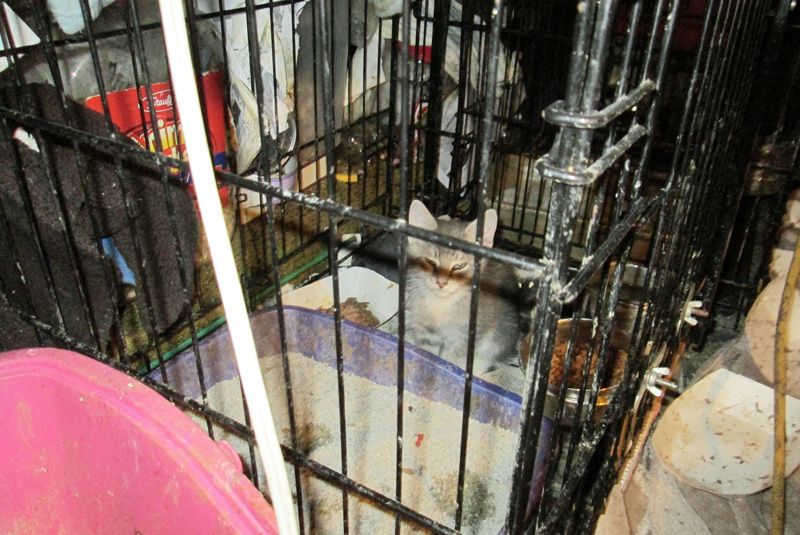
Once local news stations covered the Forever Homes seizure, Breckenridge started receiving calls from many rescues that had Tiong pull dogs from shelters in their name. “They wanted [those] dogs out of a municipal shelter environment,” he says with a trace of irony. Four dogs were too ill to treat; the shelter was able to find homes for the remaining 62.
The belief that anything is preferable to an animal being in a shelter is likely a piece of why responders say they’re seeing more and more rescue hoarders each year. It also helps explain why even people with a history of criminal activity—Tiong had a previous perjury conviction— or even animal cruelty convictions can sometimes continue to pull animals from shelters. Rescues blacklisted in one location can simply move to another, and some overwhelmed shelter staffers just don’t want to look a gift horse in the mouth, says Breckenridge.
Weak laws are another piece of the puzzle. Lauginiger, who was previously a cruelty investigator in Florida, recalls Haven Acres, a so-called cat sanctuary run by a former animal control officer and her husband, a former corrections officer. The couple had a county permit for the facility; although code enforcement officers conducted quarterly inspections of the property, they could only legally search what property owners allowed them to see.
Ideally, something similar to Colorado’s Pet Animal Care and Facilities Act would exist in every state, says Balkin. The law requires animal shelters, rescues, breeders, transporters and sanctuaries to obtain an annual operating license from a commissioner who has full access to all facilities, animals and records.
_______
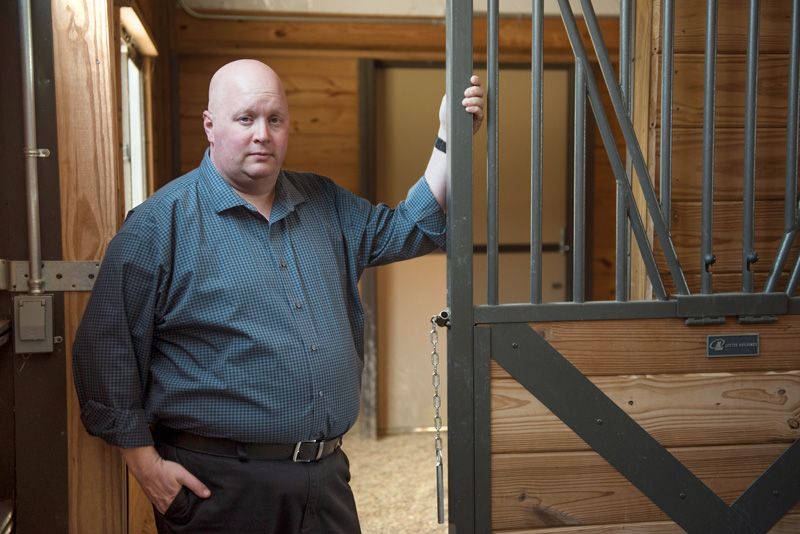
But in Florida, it wasn’t until Lauginiger accompanied code enforcement officers on an inspection that she was finally able to intervene. One of Haven Acres’ owners showed her a new “infirmary” housing cats so sick that blood and mucus were splattered across the walls, and that was enough for Lauginiger to obtain a search warrant. In June 2011, the Humane Society of the United States and Alachua County Animal Services removed 697 cats from dismal conditions.
“I had dreams about those cats,” she says, describing the horrible wheezing of cats struggling to breathe and the homemade concoction used to “treat” the cats’ illnesses. “There are so many worse fates than humane euthanasia.”
Until 2014, it was the largest cat seizure in American history. Yet Lauginiger points out that if Haven Acres’ owner hadn’t voluntarily shown her the infirmary, she wouldn’t have been able to obtain a warrant. “You can walk around a property for years and know that it’s not OK, but you need that level of evidence.”
So don’t rely on laws to prevent bad rescues from existing, she says; shelters and pet owners should always thoroughly check out rescue facilities before handing over animals. This should include at least semi-annual visits to the facility to ensure that it’s staying on track. If you’re not in the area, you can connect with a local animal welfare organization to check in for you, she says, and follow up by calling nearby veterinarians and animal organizations for references. Lockwood says you can even check nonprofits’ annual tax filings and financial statements, which any nonprofit with gross receipts over $50,000 is required to file with the IRS. “If they’ve [only] spent $10,000 on food and veterinary care for 500 cats, something’s wrong.”
The veterinary and animal welfare community should also be alert for and share warning signs, he says, recounting the story of veterinarians who identified a hoarder when they realized they had the same client but were seeing many different cats in poor condition. And both Lauginiger and Breckenridge describe a distinct “hoarder smell” that becomes familiar, over time, to many officers and investigators. Breckenridge says one animal control officer even discovered a hoarding situation after stopping for coffee at a gas station. She smelled what she knew was a “too many animals” smell and wrote down the license plate number of the pungent person.
“We’re in the business of animal welfare,” says Breckenridge of the time and work it takes to ensure rescues are truly, consistently rescuing animals. “If we care enough to save the animals, we have to continue to do it right.”


